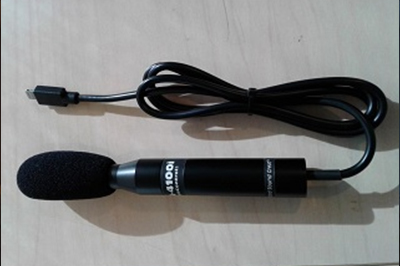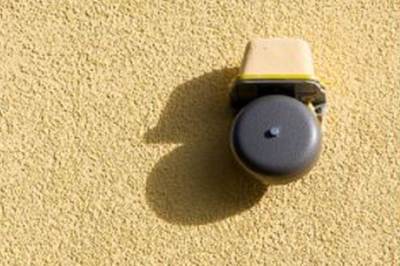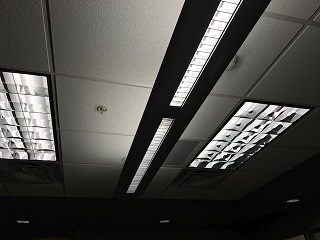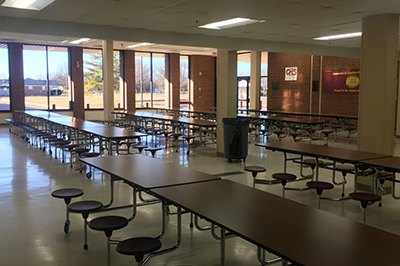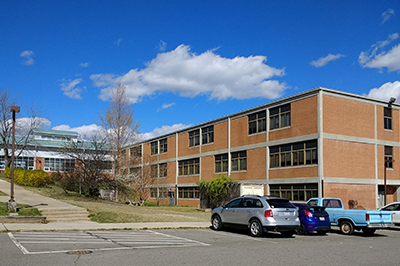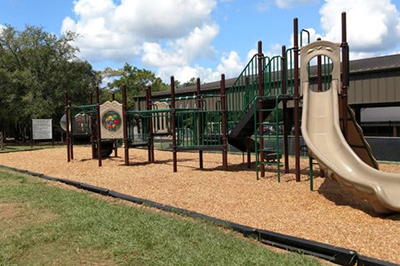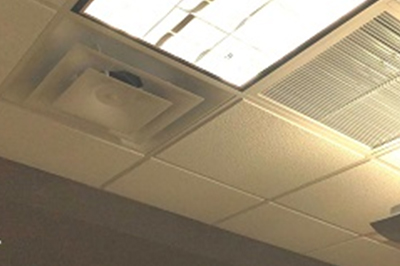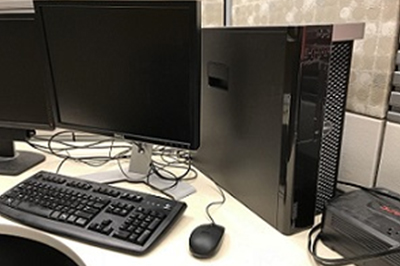Source of Noise
Source of Noise
Decibel Meter (DM)
Measuring decibel meter (dB) in 3-5 different spots (center and near windows or doors) of the room.
From the supporting literature (linked above), there is a relationship between students performance and behavior, classroom and community noise. The maximum unoccupied background noise in a classroom should be 35 dB and reverberation range of 0.6-0.7 sec. Student achievements are negatively affected by high noise level from inside and outside of classrooms. High-level classroom noise affects students attention strategies, the feeling of personal control and safety, and blood pressure. The impact of noise on students depends on students behavioral variable (hyperactive and controlled), the level of noise and the type of task being performed. It was also observed that high noise level affects students reading achievement more than maths results, Department of Health Services. A study revealed that reverberation times and background noise level were higher during classroom instruction (occupied space) than in an unoccupied classroom. Reverberation times are measured based on ISO 3382–1975 standard, and Rapid Speech Transmission Index (RASTI) values in accordance to IEC 268–16.
Recommendations
1. Consider the impact and level of aircraft and train noise When designing new schools. 2. Minimize classroom noise level through improved acoustic design.
3. Apply acoustical treatment to classroom ceilings, and resilient rubber pads installed where applicable.
4. Use natural materials in building construction and discourage the use of synthetic materials.
5. Designed rooms for electronic media should have a minimum transmission loss of forty decibels, and projection equipment in large rooms should be stored in permanent soundproof projection booths.
6. The maximum unoccupied background noise in a classroom should be 35 decibels. American National Standard Institute.
7. Promote the use of sustainable and sound absorvable materials in building design and renovation.
8. Ensure that standards and regulations are enforced to optimize the performance of building envelope.
Bell System (NA.BS)
From the supporting literature (linked above), bell system is a significant source of classroom background noise. The bell noise affects the students, teachers, and also the surrounding neighbors. The bell sound should be loud enough to be heard by the students, but the reverberation associated with it pose a problem to students, especially those with hearing difficulty.
Recommendations
1. Use improved bell system with less reverberation.
2. Ensure controlled use of the bell system.
Lighting Fixtures (NA.LF)
From the supporting literature (linked), daylight improves students behavior, achievement, and performance. Maximizing the use of natural light reduces heat gain, and increases savings by reducing energy demand, operation, and maintenance cost. Natural light guarantees improved health, productivity, safety, reduces stress and energy cost. Daylight also makes buildings sustainable and enhance their aesthetic view.
Recommendations
1. Promote the design of classrooms and buildings that maximize natural lighting.
2. The design of classrooms and choice of lighting system should be centered on the occupants, to reflect their psychological and physiological well-being.
3. Consider the age, height, and weight of students in determining the amount of light and color that is appropriate for them.
Noise adjacent to the Classroom (NA)
Walkways, Hallways, and others (NA.WH)
From the supporting literature (linked above), noise from students walking, talking, or engaging in other activities on the hallway/walkway contributes to classroom background noise which affects students concentration level. Equipment use in hallways can also impact classroom background noise.
Recommendations
1. Restrain students from engaging in noisy activities on hallways/walkways.
2. Use soundproofed materials for classroom walls, floor, and ceiling.
3. Use natural materials in building construction and discourage the use of synthetic materials.
4. Improve building environmental comfort and green building expectations by educating the occupants on building design decisions.
Glare (GL)
From the supporting literature (linked above), the existence of strong and uncontrolled light in classrooms impacts students health and performance. It also increases students stress level and makes them uncomfortable. Glare can either be directly from a light source (sunlight or artificial light) or from reflecting objects and can also be a combination of both. The effect of glare on students varies and could depend on factors such as age, weight, height, and academic achievement.
Recommendations
1. Avoid illuminating classrooms with inefficient lamps.
2. Ensure that lights are evenly distributed and controlled.
3. Use blinds and other shading devices to control glare.
4. Consider the orientation of windows in the design of classrooms.
5. Use a trackable digital blind system that maximizes the use of natural light, energy efficient, and also shows blinds’ position and rate of change.
6. Examine the impact of different types of lighting systems and sources on students.
7. Encourage the adoption of an integrated design approach. This ensures that the concern for glare is taken care of in the design.
8. Educate building occupants on the building design and control systems.
9. Create a system that encourages feedback from the occupants and incorporate their feedback into the design.
Gym, Cafeteria, and Recreational spaces (NA.GCR)
From the supporting literature (linked above), sources of classroom background noise include the gym, cafeteria, service rooms and recreational areas. The noise from these areas could be from equipment or students activities.
Recommendations
1. Use soundproofed materials in the design and construction of classrooms.
2. Ensure controlled activities in the gym, cafeteria, service rooms and recreational spaces.
3. To improve the acoustic environment in the classroom, promote the design of seat arrangement that allows modification.
Parking and Street (NA.PS)
From the supporting literature (linked above), noise from students playground is a significant source of background noise in schools. This source of noise is made worse in schools with limited space. The level of background noise in classrooms will be higher if the students’ playground is close to classrooms. The absence of quality sound absolvable construction materials for classrooms to prevent outdoor noise and reverberation is an acoustic challenge that should be addressed.
Recommendations
1. Use soundproofed construction materials for classroom walls, floor, and ceiling to prevent outside noise.
2. Locate students playgrounds away from the classrooms.
3. Ensure controlled use of playgrounds.
Parking and Street (NA.Playground)
From the supporting literature (linked), noise from students playground is a significant source of background noise in schools. This source of noise is made worse in schools with limited space. The level of background noise in classrooms will be higher if the students’ playground is close to classrooms. The absence of quality sound absolvable construction materials for classrooms to prevent outdoor noise and reverberation is an acoustic challenge that should be addressed.
Recommendations
1. Use soundproofed construction materials for classroom walls, floor, and ceiling to prevent outside noise.
2. Locate students playgrounds away from the classrooms.
3. Ensure controlled use of playgrounds.
HVAC Systems
From the supporting literature (linked above), there is a connection between classroom background noise and school building’s mechanical system. Heating, ventilation and air conditioning system of school buildings impact background noise and reverberation level which in turn influence students achievement and behavior.
Recommendations
1. Use quiet mechanical system materials for classroom and school building construction.
2. Sound absorbable materials should be used in the design and construction of classrooms to minimize indoor noise.
3. Promote the use of suitable carpets and acoustic surfacing for sound absorption.
4. Have a system that encourages feedback from occupants and incorporate it into the design.
5. Improve building environmental comfort and green building expectations by educating the occupants on building design decisions.
6. Classroom walls, floor, and ceiling should be constructed with soundproof materials.
Desk, Computers, and Others (DC)
From the supporting literature (linked above), noise from desks, computers, and other equipment are all sources of background noise in the classroom. Students attentiveness, behavior and outcomes are influenced by these background noise.
Recommendations
1. Ensure appropriate reverberation level and even dispersion of sound in the classroom.
2. The design of classrooms should be such that minimizes sound quantity and promotes quality of acoustic.
3. Projection equipment in large rooms should be stored in permanent soundproof projection booths.
4. Use suitable carpets to eliminate acoustic defects.
5. To improve audio and visual quality, instructors and visual learning equipment should be close to the students.
References
1. Archwamety, T (2000) A Spatial Distance Explanation of the Relationship between Class Size and Achievement. Research Methodology, 13(2), 99-123.
2. Armstrong, T. (2003) The Multiple Intelligences of Reading and Writing. Alexandria, Virginia: Association for Supervision and Curriculum Development.
3. American National Standard Institute (ANSI 2010). ANSI/ASA S12.60-2010/Part 1 American National Standard/ Acoustical Performance, Criteria, Design requirements, and Guidelines for Schools. Acoustical Society of America, New York.
4. American Standard Incorporation (ASI 2003) Providing inside for today’s HVAC system designer. ASHRAE/IESNA 90.1–1999 update 90.1 Ways to Save Energy.
5. Bronzaft, A.L; & McCarthy, D.P (1975) The effect of elevated train noise on reading ability. Environment and Behavior, 7(4), 517-528.
6. Carroll, M W (1982) “Facilities,” Chapter 10, Herbert Walberg (ed.) Improving educational standards and productivity. Berkley: McCutchan Publishing Corp.
7. Crandell, C; & Smaldino, J (2000) Classroom Acoustics for Children With Normal Hearing and With Hearing Impairment. Language, Speech, and Hearing Services in Schools, 31(4), 362-370.
8. Cynthia, U; Megan, T (2008) The Walls Speak: The Interplay of Quality Facilities, School Climate, and Student Achievement. Educational Administration, 46(1), 55-73.
9. Earthman, G.I (2004) Prioritization of 31 criteria for school building adequacy. American Civil Liberties Union Foundation of Maryland. Retrieved in 2016 from http://www.schoolfunding.info/policy/facilities/ACLUfacilities_report1-04.pdf, Baltimore, MD.
10. Everest. F.A (1989) The Master Handbook of Acoustics. TAB Books, Blue Ridge Summit, PA.
11. Department of Health Services (September 1981) Effects of noise on academic achievement and classroom behavior. Report No. FHWA/CA/DOHS-81/01. State of California.
12. Dockrell, J.E (2004) Children’s perceptions of their acoustic environment at school and at home. Acoustical Society of America. 115(6), 2964-73.
13. Duffy, P. M. (1992) Classrooms and Their Users: A Conceptual Mapping of Research on the Physical Environment of Schools ( school environment). Unpublished doctoral thesis. Pennsylvania State University. Pennsylvania.
14. Ford, A (2007) Designing the sustainable school. Australia: images publishing group pty ltd.
15. Fukuchi, T; & Ueno, K. (2004) Guidelines on acoustic treatments for school buildings proposed by the Architectural Institute of Japan. Paper presented at the ICA- international conference on acoustic, Kyoto, Japan. Guideline retrieved from https://www.researchgate.net/profile/Kanako_Ueno/publication/268345588 Guidelines on acoustic treatments for school buildings proposed by the Architectural Institute of Japan/links/5508d0f30cf27e990e0cf6c8.pdf.
16. Guy, R (2009) Acoustics in the Built Environment. In F. Haghighat & J.-J. Kim (Eds.), Sustainable Built Environment (Vol. 1, pp. 405 -). Oxford, United Kingdom: EOLSS/ UNESCO.
17. Harris, C.M (1955) Acoustical Properties of Carpet. Acoustical Society of America 27(1077).
18. Hyatt, C.L (1982) The effect of jet aircraft noise on student achievement and attitude toward classroom environment [microform]. Unpublished doctoral thesis. Seattle University.
19. Kristiansen, J., Persson, R., Lund, S. P., Shibuya, H., & Nielsen, P. M. (2013). Effects of classroom acoustics and self-reported noise exposure on teachers’ well-being. Environment and Behavior, 45(2), 283-300.
20. Pekkarinen, E; & Vilijancn, V (1991) Acoustic Conditions for Speech Communication in Classrooms. Scandinavian Audiology, 20(4), 257-263.
21. Ronsse, L.M & Wang, L.M (2010) AB-10-C037: Effects of noise from building mechanical systems on elementary school student achievement. DigitalCommons@University of Nebraska, 347-354.
22. Sato, H., & Bradely, J. S. (2008) Evaluation of acoustical conditions for speech communication in working elementary school classrooms. Acoustical Society of America, 123(4), 2064-2077. doi:10.1121/1.2839283.
23. Shield, B; Conetta, R; Dockrell, J; Connolly, D; Cox, T; Mydlarz, C (2015) A survey of acoustic conditions and noise levels in secondary school classrooms in England. Acoustic conditions and noise levels in secondary school classrooms in England, 137(1), 177-188. doi:10.1121/1.4904528.
24. Schafroth, T.R (1977) Control of the Acoustical and Visual Concepts in Education. University of Wisconsin – Lacrosse.
25. Tanner, C. K (2015) Green School Characteristics, Sustainability, and Student Learning. Marketing the Green School: Form, Function, and the Future, Information Science Reference, Hersey, PA, 25-37.




